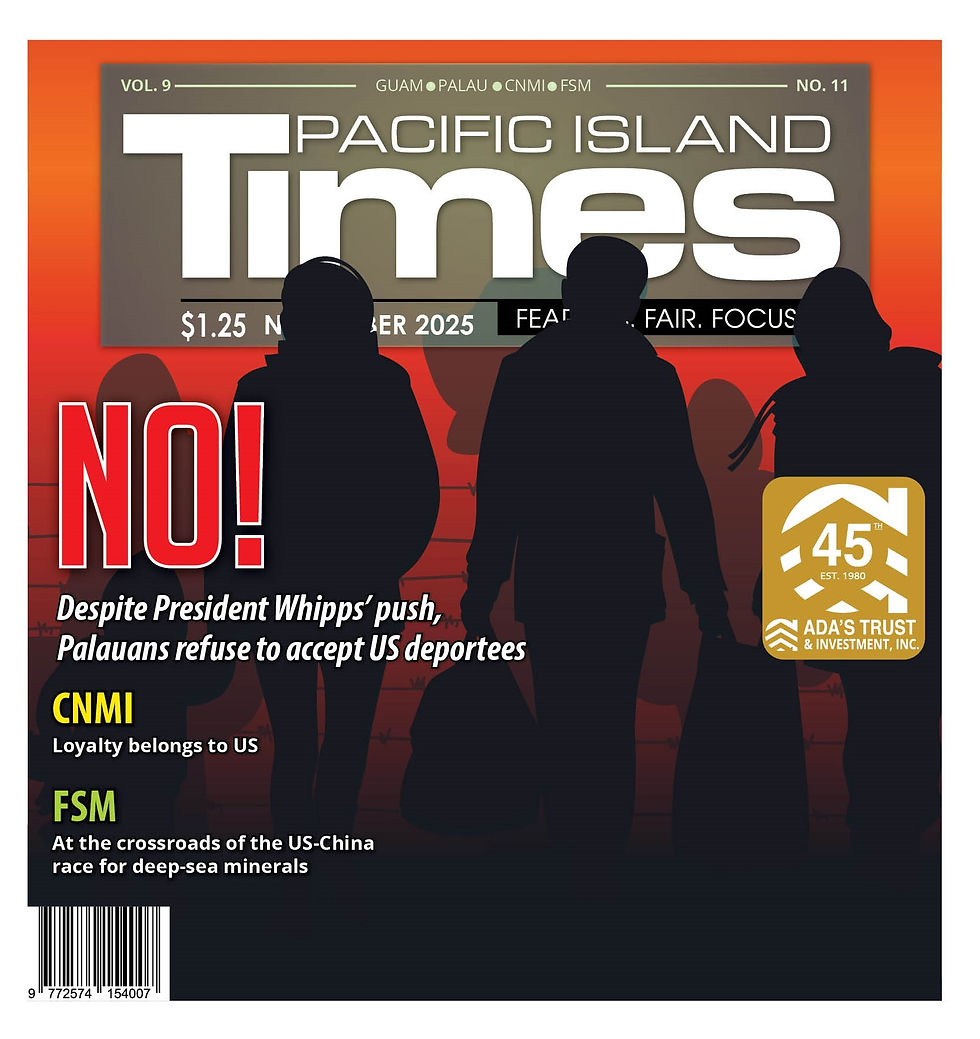NWS: Tropical Depression 32W has shown 'little notable motion'
- Admin

- 2 hours ago
- 3 min read

(NWS) Tropical Depression 32W remains well SSW of Guam in eastern Yap State.
Overall, the broader structure of TD 32W has shown little notable motion in the past 24 hours as the elongated center has slowly consolidated today.
Satellite-derived ocean surface wind data revealed a large center of weak winds with much stronger (20-35 mph) winds well out from the center. JTWC maintains 32W as a 35-mph depression due to the lack of winds exceeding 39 mph (tropical storm-force). This is expected to change soon as the center consolidates.
This will likely take place tonight or early Thursday, and will coincide with an eventual motion to the NW.
For the Marianas, tonight (Wednesday night), we will see increasing showers and winds, with the peak in local winds expected on Thursday into Thursday night. During this time, we could see sustained winds reaching 25-30 mph with gusts of up to 45 mph as bouts of heavy showers move over the islands.
Even as 32W moves away into the open PI Sea, Marianas winds will be slow to subside over the weekend, with wet conditions also lingering into Sat-Sun. Yap State will continue to see impacts from the intensifying 32W and surrounding flow.
While TS watches/warnings are only currently in effect for Ulithi, Fais, and Faraulep, all islands in Yap State should prepare for periods of very heavy showers and strong, gusty winds for the next couple of days. Sea conditions will be hazardous with combined seas approaching 15 ft.
Plan ahead: Tips from Guam Power Authority

(GPA) Guam Power Authority advises the public that high winds can cause trees and branches to fall. Take a look around your property and remove damaged trees and overhanging branches to keep you, your property, and power lines safe.
Secure all lightweight objects and anchor any items that may become airborne. Lawn furniture, canopies, garbage cans, holiday decorations and other items can become projectiles in high winds and get entangled in power lines.
If you are dependent on an electrically-powered life support system, consider
having a backup generator. Otherwise, make plans ahead of time to go to an alternate location where electricity will be available such as hospitals. Be prepared to take your medical equipment and medications with you.
Check emergency equipment such as flashlights, emergency generators,
battery-operated (hand-crank or solar) radios, light sticks, and lanterns to be sure they are operational, and buy extra batteries.
To protect your electric equipment from power outages and fluctuations caused by tropical storms, unplug unnecessary and sensitive electronic equipment. Use high-quality surge suppressors for electric appliances that remain plugged in.
The authority provides the following tips for the safe operation of and use of
generators:
Connecting the generator
· Never try to power house/building wiring by plugging the generator into a wall outlet, a practice known as "back feeding". It can lead to the electrocution of utility workers or neighbors served by the same utility transformer. The only safe way to connect a generator to a house/building wiring is to have a qualified electrician install a power transfer switch.
· Use proper extension cords. Use only safety-tested, shop-type electrical cords designed and rated for heavier, outdoor use to connect appliances.
· Protect your appliances. Turn off or unplug all appliances and lights before you begin operating the portable generator. Once the generator is running,
turn your appliances and lights on one at a time to avoid overloading the unit.
Placement of Generator
· Never use a portable generator indoors – If you or someone starts to feel sick, dizzy or weak while using a generator, move to fresh air right away, do not delay.
· Place the generator in a dry, outside location.
· Place the generator away from windows, doors, and vents that could allow
CO to come indoors.
· To avoid electrocution, keep the generator dry. Do not use in rain or wet conditions. Operate on a dry surface under an open canopy-like structure. Make sure your hands are dry before touching the generator.
Use and Storage of Generator Fuel
·Turn the generator off and let it cool before refueling. Gasoline spilled
on hot engine parts could ignite.
· Store fuel in an approved safety can outside of living areas, preferably in a locked area or other protected area.
· If you spill fuel or do not seal the container properly, invisible vapors can travel along the ground and be ignited by arcs from electric switches in the appliance.
· Use the type of fuel recommended in the generator instructions or on its label.
· Before shutting down a generator, turn off and unplug all appliances and equipment being powered by the generator.
Subscribe to
our digital
monthly edition






